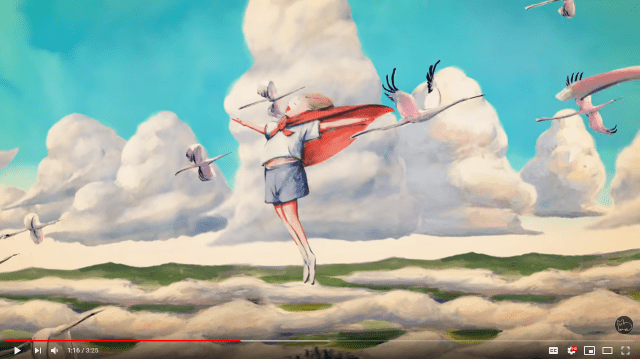
Mega-hit kids’ song may very well be an ode to the dead.
Those in Japan, especially parents, should be pretty familiar with the song “Paprika” by now. Kenshi Yonezu’s tie-in song with the 2020 Olympic Games is a catchy and spirited song that kids everywhere can’t help but sing and dance along to.
Last year when we reported the release of the English version of “Paprika,” some readers pointed out that the word “hallelujah” was taken out. The reason why seems fairly obvious as the Olympic song’s goal was to be as inclusive as possible and the religious connotations of the word might get in the way of that aim.
However, it brings up the other question of why the word was used in the first place. Sure, it’s a well-understood celebratory word, but on a casual listen the entire entire song almost seems like a mishmash of random exclamations and descriptions with little cohesiveness.
▼ Just give the English version a listen, as it’s a rather close translation of the Japanese one, and try to make sense of what it all means.
Besides the “hallelujah,” there are a few other subtle things about this song that stick out to me as odd too. Probably the biggest one is the main line of the chorus: “Paprika when the flowers start to bloom.”
In Japanese, “paprika” refers to the capsicum annum group of plants, especially red bell peppers. Although less famous that the fruits, these plants also have pretty white flowers.
So it kind of makes sense, but for blogger Nobuhiko Izumi, the line triggered a completely different memory after hearing his kids sing it a few hundred times.
He wrote that in Japanese the line uses the words “hana ga saitara,” a phrase which means “when/if the flowers bloom” and has the infinitive root “hana ga saku.” “Hana ga Saku” also just happens to be a famous charity song made in the aftermath of the 2011 Tohoku Earthquake.
“Hana ga Saku” features an all-star ensemble singing lyrics by Shunji Iwai, the words of which are written from the perspective of people who died during the earthquake and tsunami. Taking that into consideration, go back and listen to Paprika and tell me that doesn’t sound like someone singing to us from beyond the grave, telling us not to be sad because everything is okay, they are in a better place now, and we will all meet again someday.
It’s also very important to note that a Japanese concept of stereotypical heaven differs from the western one of clouds and pearly gates, and often resembles a warm sunny field of grass and trees.
▼ A place where one could play all day?
It’s little easier to see in some of the details of the Japanese lyrics, but still comes across in the English words. Suddenly, lyrics that I couldn’t really make sense of before have become crystal-clear when considering the song this way. However, that still doesn’t explain what the heck bell peppers or their flowers have to do with anything.
For that, Izumi cites the hanakotoba (the language of flowers), a traditional Japanese lexicon of flower symbolism. In hanakotoba a daffodil means “respect,” a tiger lily means “wealth,” and a paprika (capsicum annum) flower means: “I will never forget you.”
The hints don’t stop there either. In a futile effort to impress my kids, I learned how to play the song on piano and found it quite challenging at first, mainly because it’s written in a rather unusual key.
The first verse is arranged in F sharp minor which is famously described by German composer John Mattheson as “gloomy and lamenting” but the chorus switches into F sharp major which Mattheson describes as a “sigh of relief” and “triumph over obstacles.”
So even though the song is very upbeat and simple sounding upfront, there’s a distinct sense of melancholy transitioning to happiness running underneath it all.
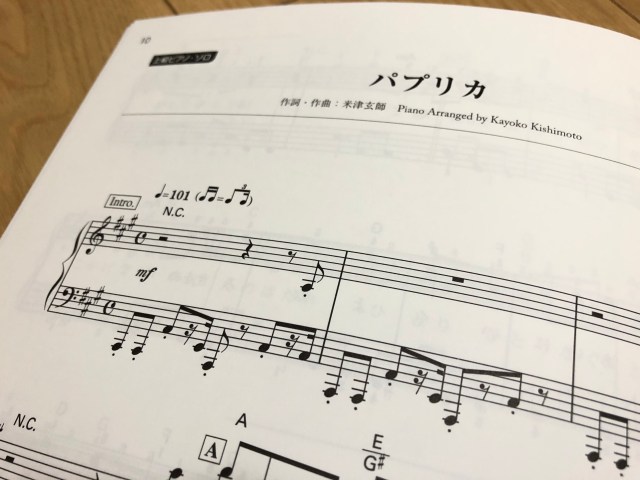
Then there are the visual clues. For example, in the two live-action videos I was always struck by a certain dance move the kids did that was very reminiscent of the “Thriller” video. Actually a few times throughout the dance the kids make a gesture in which their hands bend sharply down at the wrist — a common way Japanese people mimic ghosts.
▼ It’s most easy to see right around when they sing “hallelujah”
Also, in an instructional dance video of the song, the move is actually named yurei (“ghost”) and is the first move performed.
As for the animated video in which Yonezu sings the song himself, it almost smacks you right in the face after learning all this — that kid with the red cape is a ghost! Looking carefully you can even see that the red-caped child looks slightly younger than the other two kids, as if they are still alive and had aged eight years beyond the other one.
▼ You can see the animated version here.
By they way, this video was released during Obon, a holiday season in which it is traditionally believed that the spirits of the dead return to the realm of the living.
After hearing Izumi’s revelation, others online speculated further, such as comparing the “Thriller dance” to mimicking a paper crane, or the final line and pose of the song (pointing fingers to the sky) as a reference to the statue in Nagasaki’s Peace Park which commemorated the atomic bombing that took place there.
▼ A photo of the famous “pointing” statue that acts as a memorial to the victims.
However, in interviews and descriptions of the song, Yonezu reportedly said is was just written as random snapshots of his own memories growing up in rural Japan, and that Paprika was chosen as the title simply because it sounded peppy.
Also, people have a tendency to apply supernatural themes of death to otherwise innocuous works of art from My Neighbor Totoro to Sazae-san to Pokémon. It almost seems like human nature, and that might be the case here as well.
But in this case the evidence is especially overwhelming and found all throughout this song’s lyrics, composition, dancing, and even release dates, heavily suggesting that Kenshi Yonezu intentionally added a very deep layer of poignant subtext to this otherwise bouncy kids tune. If that really is the case, then damn… he’s good.
Source: Quora/Nobuhiko Izumi, Hachima Kiko, Ledgernote
Top image: YouTube/米津玄師
Insert images: YouTube/NHK, YouTube/Foorin – Paprika
● Want to hear about SoraNews24’s latest articles as soon as they’re published? Follow us on Facebook and Twitter!

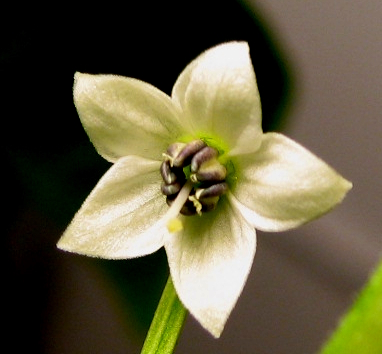
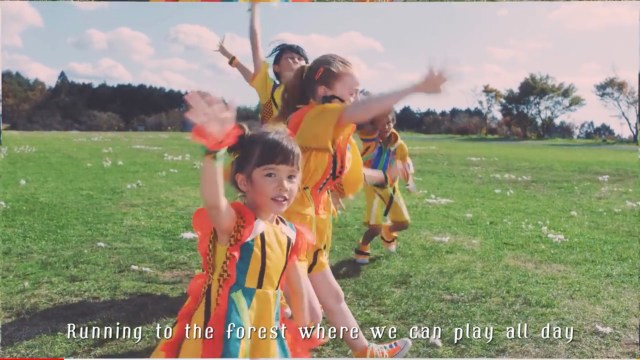

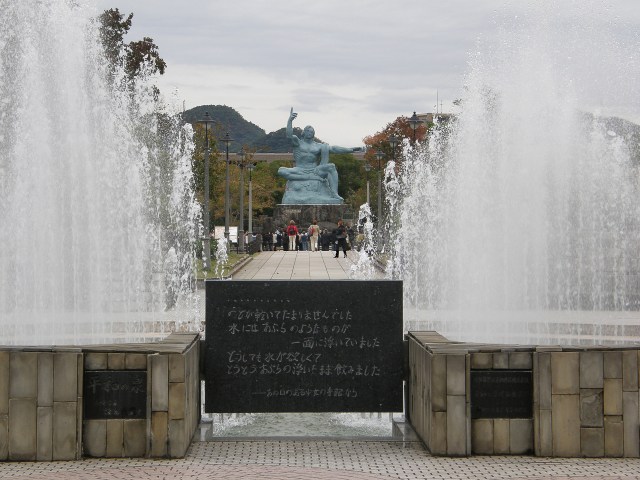
 A singalong song from Japan to surpass “Paprika?” Presenting “Karaoke Neko-chan”【Video】
A singalong song from Japan to surpass “Paprika?” Presenting “Karaoke Neko-chan”【Video】 New Ghibli anime’s theme song gets music video shot on island that inspired Princess Mononoke【Vid】
New Ghibli anime’s theme song gets music video shot on island that inspired Princess Mononoke【Vid】 Japanese kids’ show mascot busts out a juicy piano pop tune inside a subway station
Japanese kids’ show mascot busts out a juicy piano pop tune inside a subway station Let’s learn how to sing “Jingle Bells” in Japanese with the help of Santa Pikachu!【Video】
Let’s learn how to sing “Jingle Bells” in Japanese with the help of Santa Pikachu!【Video】 Monkey Majik and Taiiku Okazaki team up for bilingual Japanese-English track【Video】
Monkey Majik and Taiiku Okazaki team up for bilingual Japanese-English track【Video】 Foreigner’s request for help in Tokyo makes us sad for the state of society
Foreigner’s request for help in Tokyo makes us sad for the state of society Seaside scenery, history, and so many desserts on Yokohama’s Akai Kutsu【Japan Loop Buses】
Seaside scenery, history, and so many desserts on Yokohama’s Akai Kutsu【Japan Loop Buses】 Japanese city loses residents’ personal data, which was on paper being transported on a windy day
Japanese city loses residents’ personal data, which was on paper being transported on a windy day Japan’s summertime towelket pillowcases are even better with the addition of Ghibli stars【Photos】
Japan’s summertime towelket pillowcases are even better with the addition of Ghibli stars【Photos】 Should you add tartar sauce to Japanese curry rice? CoCo Ichi makes diners an unusual offer
Should you add tartar sauce to Japanese curry rice? CoCo Ichi makes diners an unusual offer Smash Bros. director Sakurai stabs Kirby in the face, has delicious justification for it
Smash Bros. director Sakurai stabs Kirby in the face, has delicious justification for it The results are in! One Piece World Top 100 characters chosen in global poll
The results are in! One Piece World Top 100 characters chosen in global poll Osaka governor suggests lowering voting age to 0 to curb population decline
Osaka governor suggests lowering voting age to 0 to curb population decline Japanese ramen restaurants under pressure from new yen banknotes
Japanese ramen restaurants under pressure from new yen banknotes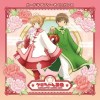 Cardcaptor Sakura Chinese Cafe opens in Tokyo, coming to other cities with special merch【Pics】
Cardcaptor Sakura Chinese Cafe opens in Tokyo, coming to other cities with special merch【Pics】 McDonald’s new Happy Meals offer up cute and practical Sanrio lifestyle goods
McDonald’s new Happy Meals offer up cute and practical Sanrio lifestyle goods French Fries Bread in Tokyo’s Shibuya becomes a hit on social media
French Fries Bread in Tokyo’s Shibuya becomes a hit on social media Studio Ghibli releases new action figures featuring Nausicaä of the Valley of the Wind characters
Studio Ghibli releases new action figures featuring Nausicaä of the Valley of the Wind characters Red light district sushi restaurant in Tokyo shows us just how wrong we were about it
Red light district sushi restaurant in Tokyo shows us just how wrong we were about it New private rooms on Tokaido Shinkansen change the way we travel from Tokyo to Kyoto
New private rooms on Tokaido Shinkansen change the way we travel from Tokyo to Kyoto Tokyo Tsukiji fish market site to be redeveloped with 50,000-seat stadium, hotel, shopping center
Tokyo Tsukiji fish market site to be redeveloped with 50,000-seat stadium, hotel, shopping center Beautiful Ghibli sealing wax kits let you create accessories and elegant letter decorations【Pics】
Beautiful Ghibli sealing wax kits let you create accessories and elegant letter decorations【Pics】 Studio Ghibli releases Kiki’s Delivery Service chocolate cake pouches in Japan
Studio Ghibli releases Kiki’s Delivery Service chocolate cake pouches in Japan New definition of “Japanese whiskey” goes into effect to prevent fakes from fooling overseas buyers
New definition of “Japanese whiskey” goes into effect to prevent fakes from fooling overseas buyers Our Japanese reporter visits Costco in the U.S., finds super American and very Japanese things
Our Japanese reporter visits Costco in the U.S., finds super American and very Japanese things All-you-can-drink Starbucks and amazing views part of Tokyo’s new 170 meter-high sky lounge
All-you-can-drink Starbucks and amazing views part of Tokyo’s new 170 meter-high sky lounge More foreign tourists than ever before in history visited Japan last month
More foreign tourists than ever before in history visited Japan last month New Pokémon cakes let you eat your way through Pikachu and all the Eevee evolutions
New Pokémon cakes let you eat your way through Pikachu and all the Eevee evolutions Disney princesses get official manga makeovers for Manga Princess Cafe opening in Tokyo
Disney princesses get official manga makeovers for Manga Princess Cafe opening in Tokyo Sales of Japan’s most convenient train ticket/shopping payment cards suspended indefinitely
Sales of Japan’s most convenient train ticket/shopping payment cards suspended indefinitely Sold-out Studio Ghibli desktop humidifiers are back so Totoro can help you through the dry season
Sold-out Studio Ghibli desktop humidifiers are back so Totoro can help you through the dry season Japanese government to make first change to romanization spelling rules since the 1950s
Japanese government to make first change to romanization spelling rules since the 1950s Ghibli founders Toshio Suzuki and Hayao Miyazaki contribute to Japanese whisky Totoro label design
Ghibli founders Toshio Suzuki and Hayao Miyazaki contribute to Japanese whisky Totoro label design Doraemon found buried at sea as scene from 1993 anime becomes real life【Photos】
Doraemon found buried at sea as scene from 1993 anime becomes real life【Photos】 Tokyo’s most famous Starbucks is closed
Tokyo’s most famous Starbucks is closed One Piece characters’ nationalities revealed, but fans have mixed opinions
One Piece characters’ nationalities revealed, but fans have mixed opinions We asked a Uniqlo employee what four things we should buy and their suggestions didn’t disappoint
We asked a Uniqlo employee what four things we should buy and their suggestions didn’t disappoint Princesses, fruits, and blacksmiths: Study reveals the 30 most unusual family names in Japan
Princesses, fruits, and blacksmiths: Study reveals the 30 most unusual family names in Japan ‘Rassun Gorerai: English version’ is even more oddball than the original 【Video】
‘Rassun Gorerai: English version’ is even more oddball than the original 【Video】 Antinomy: Talking to Urbangarde about their vision, music, and lying to fans
Antinomy: Talking to Urbangarde about their vision, music, and lying to fans Cultural Affairs Commissioner thinks some Japanese music sucks, angers many
Cultural Affairs Commissioner thinks some Japanese music sucks, angers many Pen-Pineapple-Apple-Pen singer barks like a mad dog in music video for newest song【Video】
Pen-Pineapple-Apple-Pen singer barks like a mad dog in music video for newest song【Video】 Final Fantasy fans around the world share musical creations with Home de Chocobo challenge【Video】
Final Fantasy fans around the world share musical creations with Home de Chocobo challenge【Video】 What time appears most in Japanese and English song lyrics?
What time appears most in Japanese and English song lyrics? Sheltering-in-place Japanese schoolkids form “Neo-Chorus” choir to refresh our hearts【Video】
Sheltering-in-place Japanese schoolkids form “Neo-Chorus” choir to refresh our hearts【Video】 Norwegian metal singer covers Japanese pop songs galore
Norwegian metal singer covers Japanese pop songs galore Pikachus perform classical Japanese dance routine for Japan’s most famous cherry blossom song【Vid】
Pikachus perform classical Japanese dance routine for Japan’s most famous cherry blossom song【Vid】 Here’s what Japanese netizens think of the U.S.’s top 20 most-picked karaoke songs
Here’s what Japanese netizens think of the U.S.’s top 20 most-picked karaoke songs Three tips to be a better karaoke singer, from a professional singer-songwriter
Three tips to be a better karaoke singer, from a professional singer-songwriter The Top 10 anime theme songs that Japanese people jammed to at karaoke in 2021
The Top 10 anime theme songs that Japanese people jammed to at karaoke in 2021 Pen-Pikachu-Apple-Pen? Pokémon star teams up with PPAP singer for new song
Pen-Pikachu-Apple-Pen? Pokémon star teams up with PPAP singer for new song Jennifer Connelly sang a Japanese song that became a number one hit single in Japan 【Video】
Jennifer Connelly sang a Japanese song that became a number one hit single in Japan 【Video】 BABYMETAL releases full album, metalheads and idol fans headbang in unison
BABYMETAL releases full album, metalheads and idol fans headbang in unison
Leave a Reply